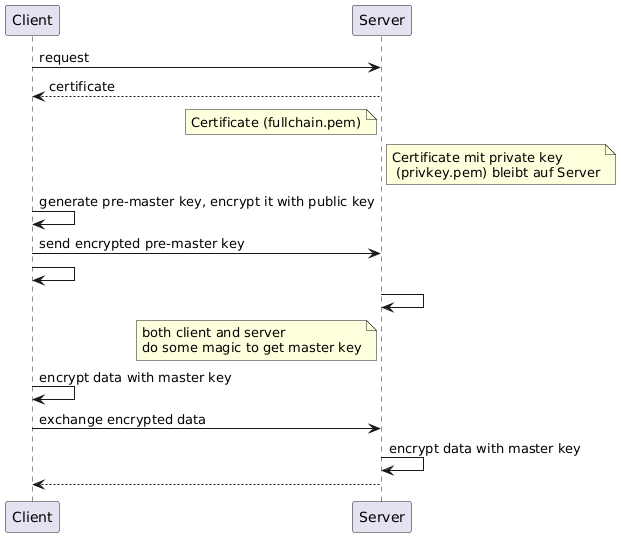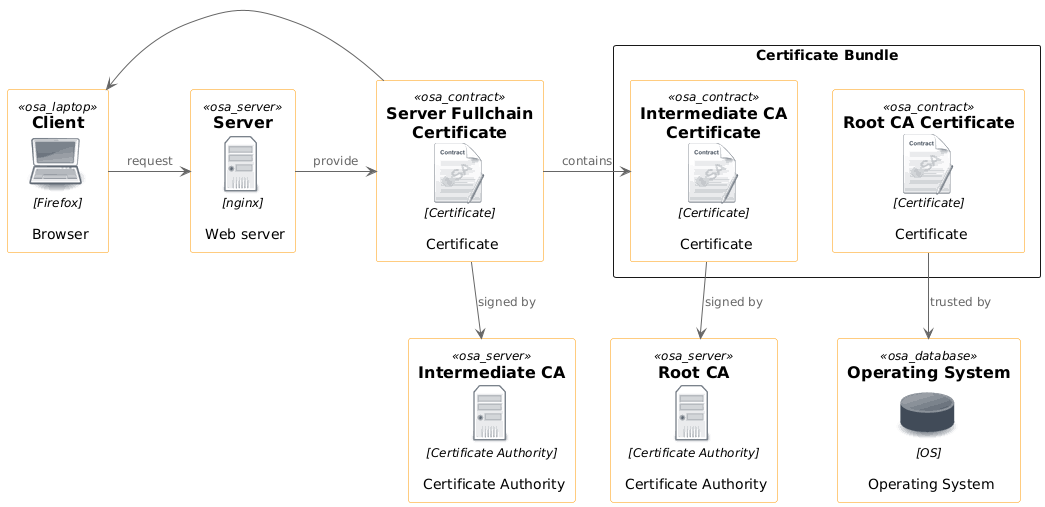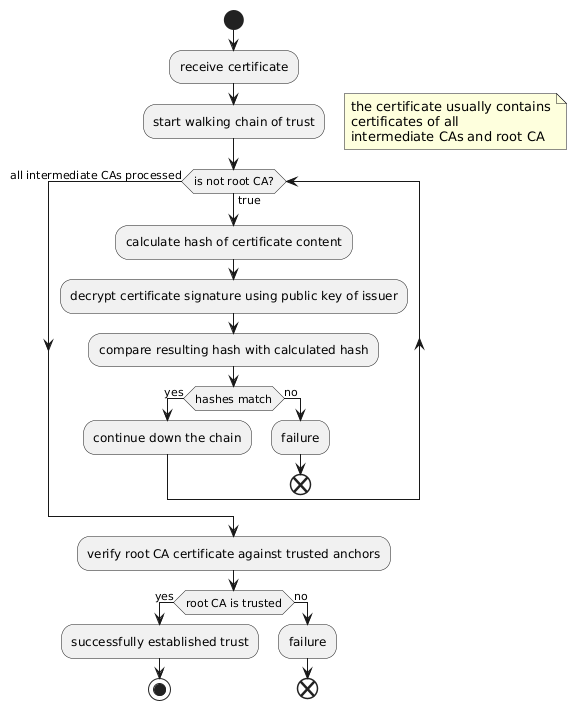Understanding SSL
After learning about the SSL handshake in Playing around with UML I now want to answer a few more questions to fill in the picture.
When a request is made from a client to a server, the client specifies which protocol it wants to use. In the case of http, the client might specify that it wants to establish an encrypted connection by using https.
When a https request is sent out, a handshake is carried out between the client and the server. In essence, the client tells the server it would like to use an encrypted connection. The server then offers its certificate. The client uses the public key contained within the certificate to encrypt a pre-master key and sends it to the server. The server can decrypt it and now both parties can use this key (with some modifications - turning the pre-master key into a master key) to encrypt their messages. Since both the client (it created it) and the server (it has the private key to decrypt it) have the master key, they can read each others messages. And the messages are encrypted while in transit. So that's the part of the actual communication at a high level.
The following diagram visualizes this process.

Now what about the certificates that lay on the server? These are a mystery to me. There
are two of them. One of them may be called fullchain and the other privkey.
So thinking about this and recollecting what I have read, these should serve the following purposes:
fullchainholds information which enables the client to verify the chain of trust (whatever that means)privkeywill be the certificate which contains the private key. Then this would mean that this certificate will never leave the browser. If that is true, thefullchaincertificate will also contain the public key. Since in my configuration there is no other certificate.
Let's check what we got so far. Gemini and a quick verification web search
tell me that the above reasoning is correct. The fullchain certificate
contains the public key, some info about the certificate, like who it was issued
to, by whom (Certificate Authority) and when it will expire. Beyond that it contains
the intermediate CA or CAs which enable the client to trace the chain of trust
back to the Root CA.
Now what are those Certificate Authorities? It starts with the Root CAs. These are a few trusted authorities. There is a list of those installed in a browser. So when the browser receives a certificate, it will check the intermediate authorities and trace them back to a root authority. If the root authority is trusted (i.e. is stored in the browsers list) all is fine.
Here's how this hierarchy might look like:

But how can this be checked? There would need to be some way for the browser to verify that the root authority is legit and that it trusts the intermediate authorities.
To do this the browser must check the digital signature of each certificate in the chain. When a CA issues a certificate it calculates the hash over the certificates content. It then encrypts the hash using the CAs private key. This encrypted hash is attached to the issued certificate.
The client will upon receiving a certificate calculate the hash of it. It will then decrypt the signature using the public key of the CA which signed it. If the decrypted signature matches the calculated hash, the CAs certificate is trusted.

The following diagram is a first attempt at working with icon libs in PlantUML. This is an attempt to better understand how the chain of trust is verified.

Let's explore how the certificates get checked by the client.
